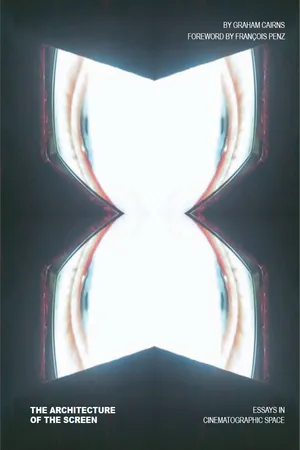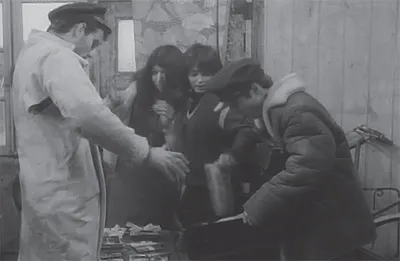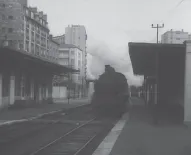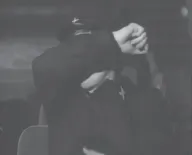
eBook - ePub
Available until 23 Dec |Learn more
The Architecture of the Screen
Essays in Cinematographic Space
- 232 pages
- English
- ePUB (mobile friendly)
- Available on iOS & Android
eBook - ePub
Available until 23 Dec |Learn more
About this book
With the birth of film came the birth of a revolutionary visual language. This new, unique vocabulary - the cut, the fade, the dissolve, the pan and the new idea of movement - gave not only artists but also architects a completely new way to think about and describe the visual. The Architecture of the Screen examines the relationship between the visual language of film and the onscreen perception of space and architectural design, revealing how film's visual vocabulary influenced architecture in the twentieth century and continues to influence it today. Graham Cairns draws on film reviews, architectural plans and theoretical texts to illustrate the unusual and fascinating relationship between the worlds of filmmaking and architecture.
Frequently asked questions
Yes, you can cancel anytime from the Subscription tab in your account settings on the Perlego website. Your subscription will stay active until the end of your current billing period. Learn how to cancel your subscription.
At the moment all of our mobile-responsive ePub books are available to download via the app. Most of our PDFs are also available to download and we're working on making the final remaining ones downloadable now. Learn more here.
Perlego offers two plans: Essential and Complete
- Essential is ideal for learners and professionals who enjoy exploring a wide range of subjects. Access the Essential Library with 800,000+ trusted titles and best-sellers across business, personal growth, and the humanities. Includes unlimited reading time and Standard Read Aloud voice.
- Complete: Perfect for advanced learners and researchers needing full, unrestricted access. Unlock 1.4M+ books across hundreds of subjects, including academic and specialized titles. The Complete Plan also includes advanced features like Premium Read Aloud and Research Assistant.
We are an online textbook subscription service, where you can get access to an entire online library for less than the price of a single book per month. With over 1 million books across 1000+ topics, we’ve got you covered! Learn more here.
Look out for the read-aloud symbol on your next book to see if you can listen to it. The read-aloud tool reads text aloud for you, highlighting the text as it is being read. You can pause it, speed it up and slow it down. Learn more here.
Yes! You can use the Perlego app on both iOS or Android devices to read anytime, anywhere — even offline. Perfect for commutes or when you’re on the go.
Please note we cannot support devices running on iOS 13 and Android 7 or earlier. Learn more about using the app.
Please note we cannot support devices running on iOS 13 and Android 7 or earlier. Learn more about using the app.
Yes, you can access The Architecture of the Screen by Graham Cairns in PDF and/or ePUB format, as well as other popular books in Technology & Engineering & Power Resources. We have over one million books available in our catalogue for you to explore.
Information
PART I
Film reviews
The cinema of the French New Wave and the illusionism of SITE architects
Les Carabiniers. 1963
Les Carabiniers. 1963

Les Carabiniers, 1962, is one of Jean-Luc Godard’s earliest films. It captures the energy, irreverence and radical reconsideration of cinematic practice that was to characterise the whole of the French New Wave. Its aesthetic is casual and untidy, if not amateur. It eschews constructed sets in favour of the street, and employs non-professional actors who improvise rather than follow a script. Its editing is full of deliberate errors and its storyline is both absurd and lacking in narrative orientation. It is visually erratic, thematically confusing and clearly rejects the seriousness and solemnity of the French filmmaking establishment of the time.1 In addition, it celebrates the commercial filmmaking tradition through a whole series of referential puns and simultaneously criticises the society of spectacle and consumption. In short, it is typical of Godard.2
The story itself revolves around two main protagonists: Ulysses and Michelangelo. Enlisted to fight in what amounts to a comic civil war, they are obliged to leave their partners with whom they share a broken-down shed in the country. For their female companions, their departure on a military adventure represents an opportunity to ask for all sorts of exotic and romantic gifts from their now “gentlemen of war”. For Ulysses and Michelangelo themselves, it represents an opportunity to steal, kill and violate every type of norm and law “under the protection of the King”. These comically absurd anti-heroes, dreaming about the benefits of impunity, set forth on a journey through the absurdity of a meaningless contemporary war across the cities and villages of 1960s France.
Despite this comic narrative framework however, the film is far from superficial in intent; the absurdity of the storyline itself being a central part of the film’s sociopolitical commentary. That commentary is threaded through with a typical New Wave blend of internal and external references.3 Images often function as witty asides on religion or contemporary politics, the dialogue is showered with comments alluding to the “external events” of the “real world”, and even the names of the protagonists become part of the film’s multi-referential game. It is a complex intertextual tapestry reminiscent of the work of writers such as Jorge Luis Borges and Umberto Eco, in which the viewer is obliged to enter into an intellectual game of deciphering direct and indirect references, to which, of course, they bring their own baggage as well.4 It is a cinematic game with what Eco calls “the role of the reader”.5
Integrated into this menagerie of associations, quotes and insinuations are references to the world of cinema itself; the most notable being the scene in which we see a screening of The Arrival of a Train at La Ciotat, 1894. Another is the employment of various editing styles: for example, continuity editing to reference the Hollywood tradition and montage editing to reference the Soviet school. Yet another is the introduction of documentary footage that reminds us of the neorealist school; a reference reinforced by the setting of scenes in real locations, the use of natural illumination, the employment of handheld cameras and the lack of professional actors. Clearly echoing the aesthetic similarities of the work of directors like Roberto Rossellini and Luchino Visconti, it is another case of Godard’s cinematic self-referential intertextuality.6
In the cinema of the Neorealist school this “realist aesthetic” was intended to appear more “realistic” and, to a certain extent, more “basic” than what had become the industry norm, i.e. the tightly controlled continuity aesthetic. In Les Carabiniers however, it is used for scenes, and a story, that are anything but realistic or basic. The absurdity of the protagonists, caught up in a narrative equally as absurd means that, in spite of employing a Neorealist aesthetic style, there is an overriding sense of unreality and irony throughout the film. In fact, it could be argued that there are certain characteristics of the Neorealist style that actively augment this sensation of artificiality. For example, Godard highlights the shaking of the handheld camera, the wooden acting of the protagonists and the lack of clear lighting on his sets. In addition, he allows exterior and alien sounds to intrude over the dialogue and follows everyday actions that, as in real life, do not advance towards any sort of narrative resolution.
These characteristics, as “realistic” as they may be, actually create a type of cinema that seems totally “artificial”.7 In addition to feeling “artificial” however, the lack of narrative drive often leads to long scenes with little or no obvious meaning; a meandering plot structure regularly criticised as inane and indeed boring. What criticisms of this type indicate is that, in the framework, film (the artificial language of the continuity system) has become what we expect and understand the medium to be; it has come to represent our “cinematographic reality”. This cinematographic reality is more interesting, intense and spectacular than our everyday reality, which, as Godard shows, is something that advances slowly, often without clear objectives, and does not necessarily lead to a clear and clean resolution of problems.
Our familiarity with the more intense and interesting mediated reality offered by Hollywood cinema is something dealt with, albeit from a different perspective, by thinkers like Jean Baudrillard and Umberto Eco, who at the time of Les Carabiniers were putting forward their concepts of the “simulacrum” and “hyperreality”, respectively. Baudrillard argues that through the process of reproduction, reality and unreality enter into an ever closer relationship within which the difference between both states begins to blur.8 Under such conditions, it becomes possible to confuse the real with the unreal and, as Eco comments with respect to Disneyland, eventually prefer the latter.9 Such questions are implicit throughout Les Carabiniers and are seen with most clarity in the scene mentioned earlier, in the screening of The Arrival of a Train at La Ciotat. Finding himself in front of a cinema screen for the first time, the young protagonist, Michelangelo, is both stupefied and amazed by his first taste of “cinematic reality”.
The scene opens with the camera focused on Michelangelo. The first cut changes to a train, before cutting back to Michelangelo. The visual quality of the footage in the two shots does not change and the image of the train fills the screen we look at as viewers. By not exposing the physical context of the cinema to the viewer, and not changing the visual quality of the two images, Godard deliberately blurs the difference between our viewing of Michelangelo and his viewing of the cinema’s screen. By denying the spectator these pointers, the initial moments of the scene can be confusing. That confusion, however, is a deliberate pun on the confusion seen in the face of Michelangelo, who is totally incapable of distinguishing between the physical reality of his surroundings and the cinematic illusion on screen. In a reaction that repeats that of the first public to see The Arrival of a Train at La Ciotat, at the end of the nineteenth century, we see him panic and cower behind his seat as the train arrives and threatens to break through the screen of the theatre (Figs. 1–2).10

Figure 1: The Arrival of a Train at La Ciotat.

Figure 2: The fear of the hero.

Figure 3: Hyperreal postcards as the spoils of war.
What we have in this sequence is a scene that functions on various levels; it is an example of Godard’s renowned intertextuality: it is a joke at the expense of the viewing public, a witty reference to early cinematic audiences and also a parody of the real and the unreal experience of Michelangelo. In the following shots, the scene continues to develop this parody when our anti-hero watches a svelte woman taking a bath in the following short film he watches in the cinema. Given that he is still unsure as to the reality, or otherwise, of the images he is looking at, he moves tentatively towards the screen. Trying to look inside the bathtub, he finally attempts to caress the naked body of the mediated object of his desire and, in his excitement, loses his balance and falls through the screen, destroying it in the process.
This type of parody on the real and the unreal is repeated in a subtly different way in another of the film’s most celebrated scenes, the return of the two protagonists from the war. Carrying nothing but an old and worn suitcase full of postcards, they are a total failure in the eyes of their partners. For these heroines, expecting the riches and spoils of war, the loot is both ridiculous and boring. Indeed, they automatically begin to ridicule our heroes until Ulysses begins to present the postcards in a different way, as if they were not images at all, but actual “objects in their own right”. By the end of the scene, the two girls appear to be as excited by these “representations of riches” as they would have been with the real thing. Salvaging their damaged prestige through the simulacrum, Michelangelo and Ulysses offer their romantic companions a hyperreality that is more interesting, intense, and certainly more accessible, than real life (Fig. 3).
Clearly replete with references to the ideas of Jean Baudrillard, The Situationists, Umberto Eco and others, Les Carabiniers finds multiple echoes in diverse fields. Those fields are, however, not limited to standard forms of social critique but are also found in the context of architecture, most notably, in the contemporary work of the American architects SITE.11 At the time Les Carabiniers was released, SITE were developing an approach to architecture that they themselves defined as “a reaction to the architecture of the modern movement”. The argument underlying this “reaction” was their interpretation of modern architecture as “insipid and based on a functional language that a contemporary public did not understand or like”.12 Resorting to what they called ancient concepts, with respect to the very definition of architecture itself, they proposed that for “buildings” to become “architecture”, they had to go beyond function; for SITE, buildings “become” architecture when they “communicate”.13
According to this definition, the buildings of antiquity are perfect examples of architecture in that they are immediately understandable as places of public importance. What they “communicate” is their own cultural significance.14 As such, SITE define architecture as “special places” or “celebratory buildings”.15 An important characteristic of this celebratory architecture is its employment of additional decorative elements whose role it is to help in the communication process. The pediment of a classical building is a prime example; not only does it help to communicate but it also makes the building “more interesting”. On the basis of this ...
Table of contents
- Cover Page
- Title Page
- Copyright
- Contents
- Foreword by François Penzix
- Introduction
- Part I: Film reviews
- The cinema of the French New Wave and the illusionism of SITE architects Les Carabiniers. 1963
- The architecture of Diller and Scofidio: The screen and surveillance Das Experiment. 2001
- The “cut” in the architecture of Jean Nouvel and the scenery of Ken Adam You Only Live Twice. 1967
- The visual narratives of Resnais in the architecture of Carlo Scarpa Hiroshima Mon Amour. 1959
- German Baroque architecture and the filming of Resnais: A fusion Last Year in Marienbad. 1961
- Sigfreid Giedion, Rem Koolhaas and the fragmentary architecture of the city Run Lola Run. 1998
- The aesthetics and formalism of Godfrey Reggio in the projects of Jean Nouvel Koyaanisqatsi. 1982
- Boullée on film: An architectural cinematography The Belly of an Architect. 1987
- Playtime: A commentary on the art of the Situationists, the philosophy of Henri Lefebvre and the architecture of the Modern Movement Playtime. 1967
- Venturi and Antonioni: The modern city and the phenomenon of the moving image Zabriskie Point. 1970
- Part II: Applying film to architecture
- Video Installation: Hybrid Artworks
- The physical experience of space and the sensorial perception of image
- The physical experience of image and the sensorial perception of space
- Cinematographic architecture: Exercises in theory and practice
- Cinematographic space: A study of Citizen Kane
- From the contradictions of film to the creativity of architecture: Design workshop
- Part III: Conceptual essays
- The hybridisation of sight in the hybrid architecture of sport: The effects of television on stadia and spectatorship
- Cinematic movement in the work of Le Corbusier and Sergei Eisenstein
- The historical construction of cinematic space: An architectural perspective on the films of Jean Renoir and Yasujiro Ozu
- Cinematic phenomenology in architecture: The Cartier Foundation, Paris, Jean Nouvel
- Cinematic space and time: The morphing of a theory in film and architecture
- Conclusion
- Bibliography
- Index
- Index of Images
- Back Page